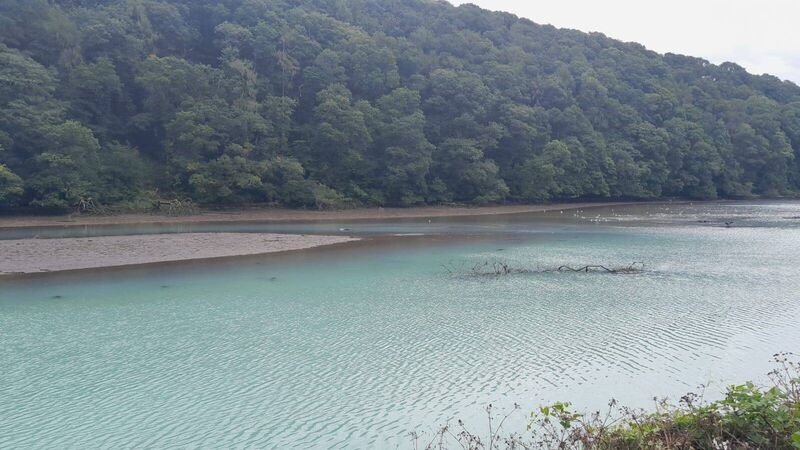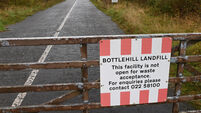Just half of rivers and lakes in good condition

According to the data, there were 9% fewer river water bodies in good or high ecological status between 2016 and 2021 compared with 2010 and 2015. File picture: Inland Fisheries Ireland
Just half of Ireland's rivers and lakes were deemed to be of good ecological condition in the latter half of the past decade, with rivers especially dropping in quality from previous assessments.
According to data published by the Central Statistics Office (CSO), around 51% of monitored river water bodies were classified as "good or high ecological status" between 2016 and 2021, while 49% were in moderate, poor, or bad ecological status.
Worryingly, rivers considered to have a good or high ecological status fell from the previously monitored five years. According to the data, there were 9% fewer river water bodies in good or high ecological status between 2016 and 2021 compared with 2010 and 2015, the CSO said.
By comparison, lakes improved overall, with a 4% increase in the number of lakes in good or high ecological status in the consecutive five-year blocks.
Cork fared well when it came to the quality of its rivers, the data show. Along with Wicklow and Leitrim, Cork had the highest proportion of river water bodies in good ecological condition. In contrast, Louth, Dublin, and Kildare were the counties with the lowest proportion
CLIMATE & SUSTAINABILITY HUB
High ecological status is defined as no or very low human impact, the CSO said.
"In general, water bodies in high and good ecological status show only minor or slight changes from natural conditions, whereas waters in moderate, poor, or bad ecological status range from moderately to severely damaged by pollution or habitat degradation," it said.
In relation to lakes, around 48% monitored in 2016 to 2021 were in good or high ecological status, with 52% in moderate, poor, or bad status. Clare was among those to fare badly when it comes to lakes, the data show.
The CSO said Erne in the North, Erriff-Clew Bay in Mayo, Sligo Bay, Malbay in Clare and the Lower Shannon, and Lough Swilly in Donegal all had at least one lake water body in bad ecological status in 2016 to 2021.
CSO statistician Nova Sharkey said around half of our river and lake ecosystems failed to reach the objectives set out in the EU's Water Framework Directive. Europe has taken Ireland to task over water quality failures in lakes and rivers going back two decades.
"Only river and lake ecosystems in good condition can provide us with a full suite of ecosystem services, including clean water for drinking, habitats for biodiversity, flood protection, and cultural and recreational services.
"It is worth noting that the total number of river water bodies monitored by the Environmental Protection Agency (EPA) has been increasing since the 2007-2009 assessment period, from 2,161 to 2,398. The percentage of monitored river water bodies reaching good or high status was highest in the 2010-2012 period at 60%.
"However, there has been a decrease in ecological status in every assessment period since then," Ms Sharkey said.
In January this year, the European Commission said it was referring Ireland to the European Court of Justice (ECJ) for failing to correctly transpose the Water Framework Directive into national law. EU member states were required to do this by December 2003.
Ireland initially adopted legislation, but the commission found it to be insufficient, it said. The directive requires that all inland and coastal waters reach at least good status by 2027 at the latest.
The EPA has said the upcoming River Basin Management Plan must address water quality issues. It said in June that fertilisers and manure had exacerbated nitrogen and phosphorus levels in the country's rivers and lakes last year.
Nitrogen levels in rivers and groundwater increased overall between 2021 and 2022, the EPA said. It added nitrogen was too high in 40% of river sites and in 20% of estuarine and coastal water bodies. In addition, it said, phosphorus levels were too high in 28% of rivers and 36% of lakes.
Ireland's River Basin Management Plans are unveiled in six-year cycles, and the latest will bring it up to the EU's 2027 deadline. Overall, just 44% of rivers across the country for which a pristine objective has been set in the River Basin Management Plan for Ireland are currently achieving that status.
An Taisce is among the organisations to criticise the plan for "being too weak to stem the tide on water pollution", calling for far more "robust" measures within it before it is finally published.













